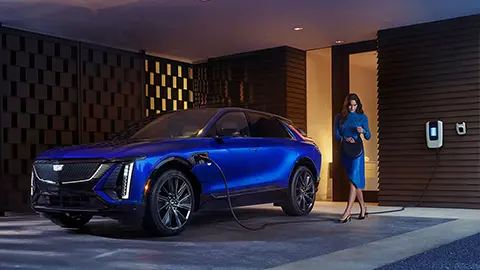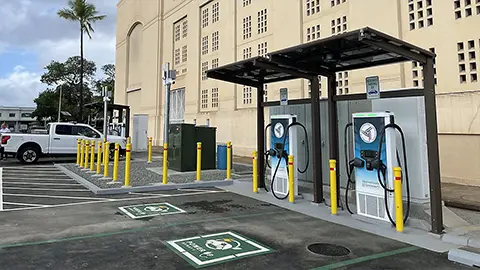Kia Previews New Line of Electric Vans
Electric cars are an attractive value proposition for individual drivers and families for several reasons: they’re packed with tech; they offer zero greenhouse gas emissions; and their running costs can be significantly less than gasoline vehicles. All of those characteristics also make them an ideal for businesses, especially businesses that operate a fleet of vehicles. Especially in terms of fueling and maintenance, the cost advantages of electric vehicles multiply over whole fleet – while simultaneously improving safety, efficiency, performance, and the experience for employees behind the wheel.
While there are already a few electric entrants in the commercial vehicle segment – the Ford E-Transit is the most popular electric delivery van at the moment – most of the current entries available to small businesses are based on gasoline models, and thus are compromised in terms of their range, packaging, and ultimate efficiency. (On the other hand, Rivian and General Motors subsidiary BrightDrop have developed specific EVs for Amazon, FedEx, and other large customers.) That’s about to change, as Kia has just introduced its Platform Beyond Vehicle (PBV) strategy – which will spin off a range of commercial vehicles in multiple sizes from a modular, EV-specific platform.

New Kia Vans Launch at CES
Previewed at January’s Consumer Electronics Show (CES) by the Kia Concept PV5, the new Kia commercial vehicles are intended to be a total solution for businesses that encompasses electric vehicles, management software, charging, and after sales service to help businesses maximize the potential of their electric fleets. Equipped with the latest advanced safety and assistance systems, the new Kia EV vans will also provide substantially enhanced security for drivers.
From a hardware perspective, Kia’s PBV strategy is built around a modular, ground-up EV platform that can be highly customized for different sizes and potential uses, with different body styles, flexible interior spaces, and features that enable them to be used to move both cargo and passengers. The same basic platform and components will underpin both compact delivery vans used in city centers as well as larger taxis and ride-share vehicles. Indeed, behind the fixed “driver zone,” the cargo and passenger modules can be changed with relative ease thanks to electromagnetic and mechanical coupling technology – enabling PBV vehicles to be used for multiple purposes at multiple times of the day by one owner/operator.

Electric Vans: Modular Design and Interior Accommodate Multiple Uses
No matter what the configuration, Kia’s concept PV5 models are unified by a simple design language with strong graphics, large doors, and huge openings that make it easy to get people and packages in and out. The extended wheelbase and electric platform provide maximum space on a surprisingly compact footprint. Because most of the PBV models will be used by multiple drivers, they have been designed to be as simple and intuitive to operate as possible – no matter what the use case.
Kia says that it will roll out its new PBV models in multiple phases, starting with the PV5. The PV5 is a versatile electric commercial vehicle that can, based on the body style chosen, be used for ride-hailing, delivery, utilities, and other diverse commercial purposes. Available body styles over time will include a basic van, high-roof van, a chassis cab to which a cargo box or bed can be attached, and even a robo-taxi configuration. An integrated rail system is built into the vehicle’s ceiling, floor, and side panels both inside and out – making it easy for business owners to customize the PV5 to meet their needs, as well as easily move items between vehicles and secure them quickly and easily.
All PV5 models will include Kia’s software platform, which has enhanced data connectivity between the vehicle and management software, to allow business owners to track efficiency, routing, and other stats remotely – making it easier to manage a fleet of vehicles.
What Other Kia Commercial Vehicles Are Coming?
There will be two other PV models that follow the PV5, in phase two of Kia’s roll-out:
- PV7 will be the largest product in Kia’s commercial vehicle offering, a large EV that has been designed to offer more interior space, impressive driving range, and enhanced functionality. Like PV5, it will offer a “cabinet and frame” system to allow owners to change its body style for different use cases.
- PV1 will be the smallest commercial EV, designed specifically for agile and short-distance logistics in dense urban centers and along high-traffic routes. Its driving modules will be exceptionally small, with a tiny turning radius to make the PV1 easy to maneuver even in tight alleyways.
Fleet Management Software Maximizes Savings
To help business owners take full advantage of the capability of these new electric vans, Kia says its dedicated business system will include software solutions for fleet management and charging – helping owners minimize costs and increase efficiency. The fleet management solution will allow owners to oversee multiple vehicles to provide insights on sales, inventory, and deliveries for logistics businesses, and all businesses can take advantage of intelligent route planning to maximize speed and minimize energy consumption.
Kia’s charging solution, connected to the fleet management software, will optimize charging schedules by considering battery charge levels, routes, schedules, and even driver breaks. Business owners can install chargers at the vehicles’ home base, where vehicles are generally parked overnight and can charge at the lowest possible cost.

Kia PV5 Availability
When will we see the new Kia PBV models on the road? Construction of a dedicated plant in Hwaseong, Korea is underway. The new factory will feature hybrid production that combines conveyors and cell-based assembly, which better suits the PBV models’ ability to convert to different use cases. Annual capacity for the plant is planned to be 150,000 units, and you can expect to see the first PV5 models on the road in 2025.
















